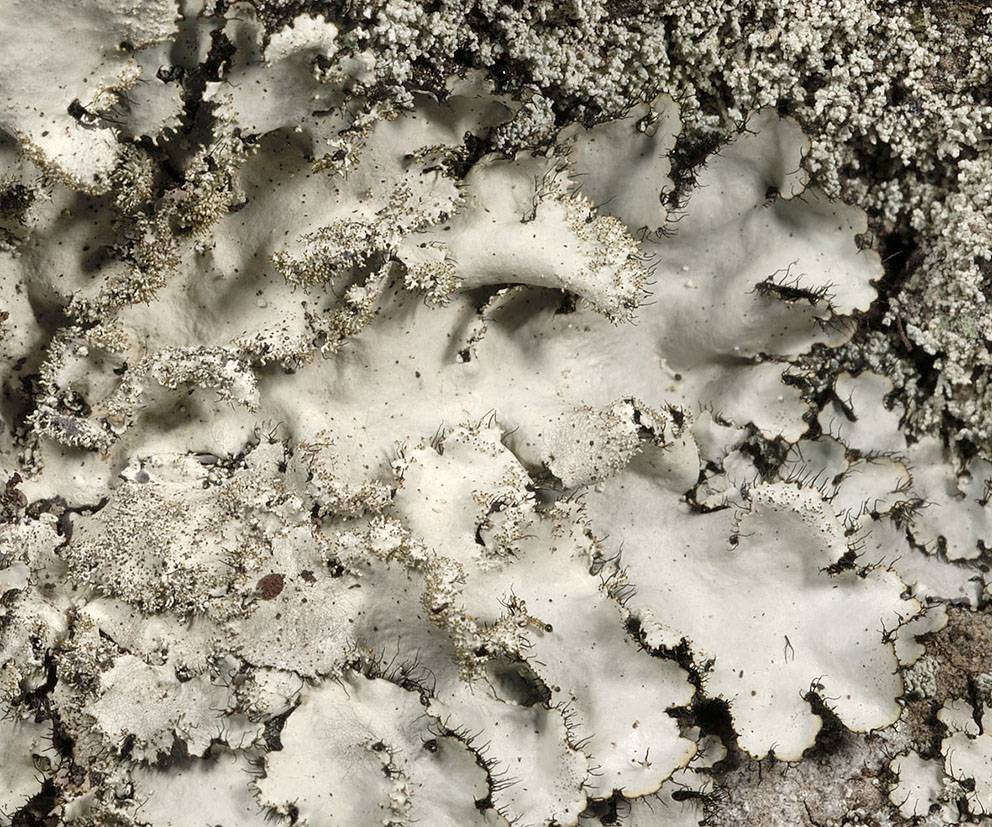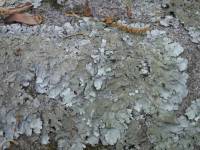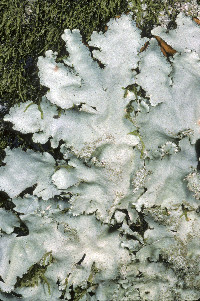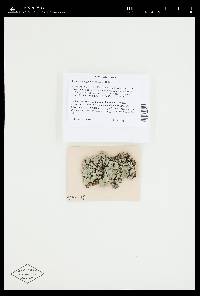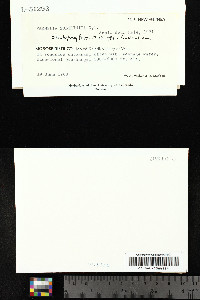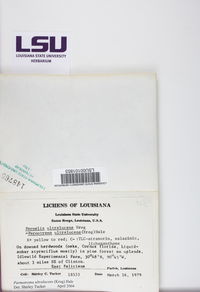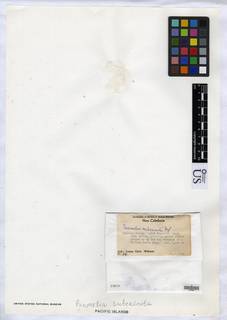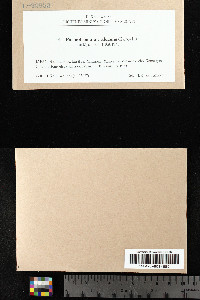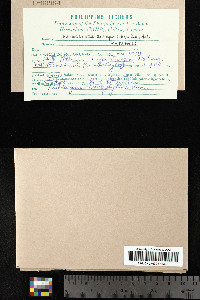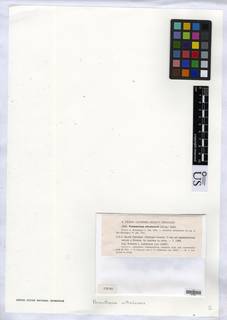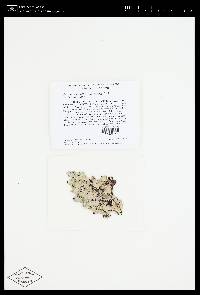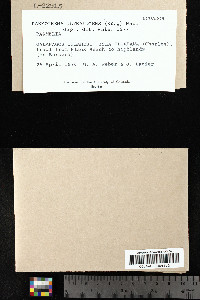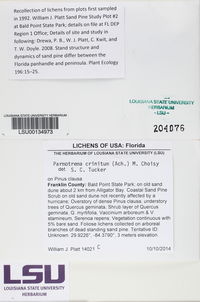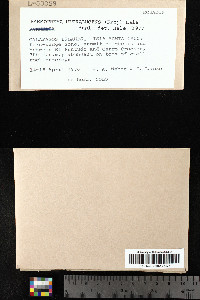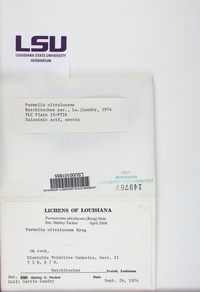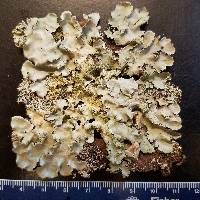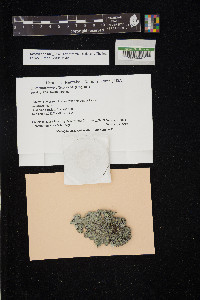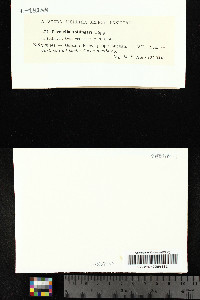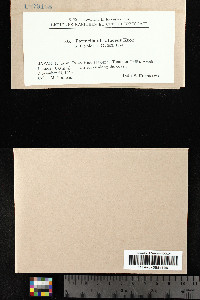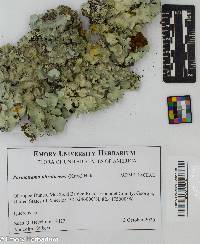
- Home
- Search
- Images
- Species Checklists
- US States: O-Z >
- US National Parks
- Central America
- South America
- US National Parks
- Southern Subpolar Region
|
|
|
|
Family: Parmeliaceae
[Canomaculina ultralucens (Krog) Elix & J.B. Chen, moreParmelia subcrinita Nyl., Parmelia ultralucens Krog] |
MycoBank no. 343142 Type: USA. Georgia: Harris County, Dowdell’s Knob, on rock, 1965, Krog, H. s.n. (O – holotype!, BM – isotype!). Description. Thallus corticolous; upper surface whitish gray to ivory, ± dull, epruinose, emaculate, but occasionally Chemistry. Cortex with atranorin [P+ yellow, K+ yellow, KC–, C–, UV± yellow]; medulla with lichexanthone and salazinic acid [P+ deep yellow, K+ yellow, soon turning blood-red, KC–, C–, UV+ bright yellow]. Ecology and distribution. Africa, Asia, Azores, Oceania, North, Central and South America (Krog 1974; Swinscow & Krog 1988; Elix 1994; Louwhoff & Elix 1999; Kurokawa & Lai 2001; Elix et al. 2002; Chen et al. 2003; Spielmann 2009; Marcelli & Benatti 2010; Egan et al. 2016). First reported by Weber (1986), subsequently by Elix & McCarthy (1998) and online (Bungartz et al. 2016). In the Galapagos a moderately common species and apparently restricted to dry environments (zones: dry, transition, high-altitude dry); mostly on bark on native trees (Bursera), scrub (Croton) and cacti (Opuntia), less Notes. Superficially very similar to both P. crinitum and P. neosubcrinitum, which both also contain salazinic acid and occasionally have tufted, caespitose, ciliate isidia. This species can easily be distinguished by its conspicuously UV+ bright yellow medullary reaction (due to the presence of lichexanthone). The species can further beconfused with P. mellissii, which occasionally has tufted, caespitose, ciliate isidia but does not contain salazinic acid in its medulla and instead has alectoronic acid, which reacts UV+ bright greenish blue, not yellow. |
|
|
|

